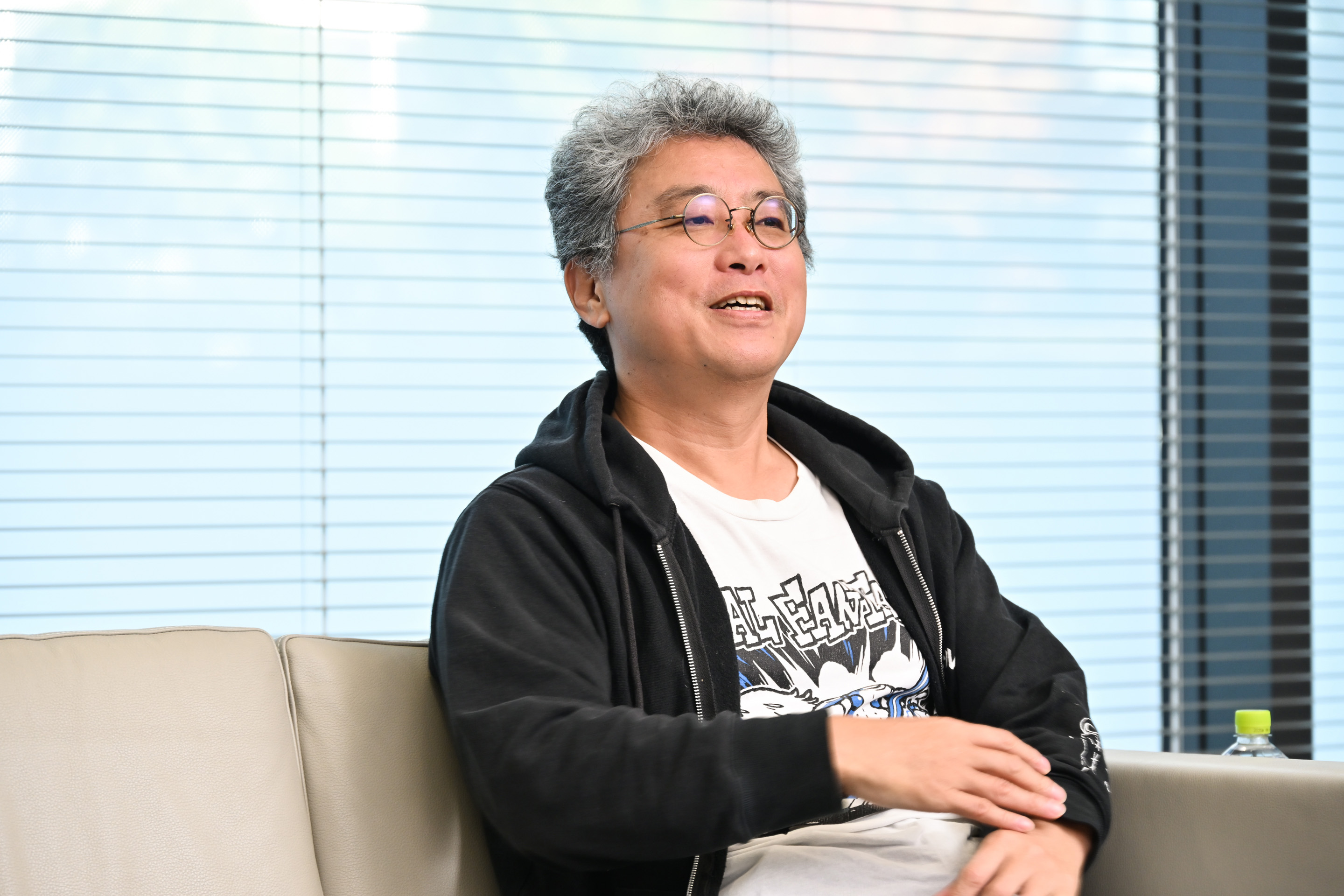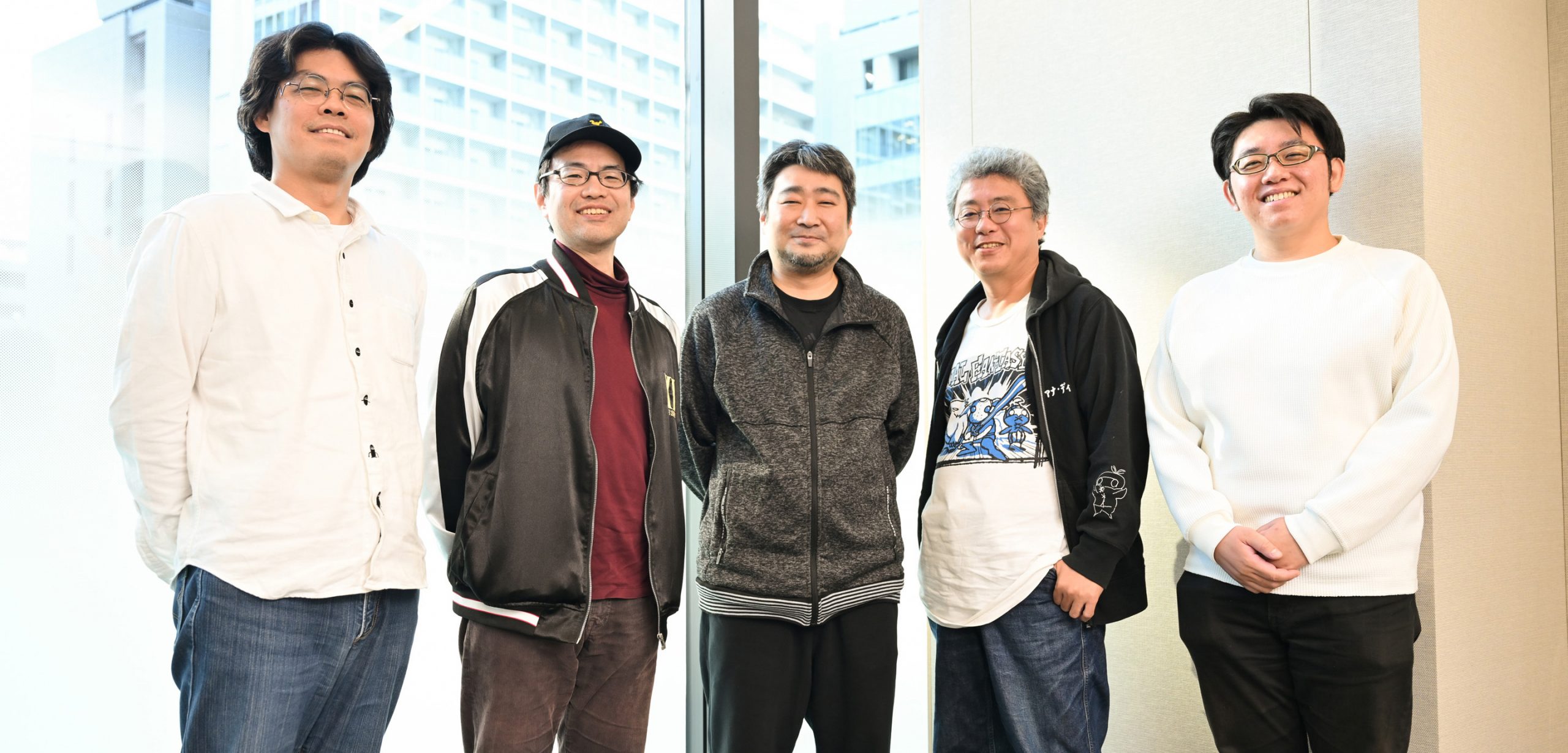"WE DISCUSS VANA'DIEL" is a series of conversations between Producer Fujito and special guests who are familiar with FINAL FANTASY XI (FFXI). Here in Season 2, we're featuring conversations between Producer Fujito and the development team in regards to the middle and later stages of FFXI's creation, including the various expansion packs and additional scenarios that have been released over the years.
This episode focuses on Rhapsodies of Vana'diel, which was an additional scenario that served to wrap up FFXI's story. Continuing on from the Season 2, Episode 8 discussion on Seekers of Adoulin, our guests include Akihiko Matsui, Mizuki Ito, and Masaru Taniguchi. This time, we are also joined by Yasushi Yamazaki, who helped with the development of the Trust magic system. Together, we will take a behind-the-scenes look at the development process for the various content contained within the scenario.
Rhapsodies of Vana'diel was released on May 14, 2015, serving as the first part of the epic conclusion to the long-running FFXI storyline. That was followed by subsequent releases throughout the year, culminating with the third chapter as well as an epilogue to tie up the story being released on November 10th. In order to play through the story, it was necessary to have achieved a certain level of progress in the missions from all of the previous expansions.
The story begins with a young girl named Iroha who has come from the future. She warns the adventurers that Vana'diel is threatened with impending annihilation. Players must work together with Iroha in order to avoid what is to be the certain destruction of their world. The story featured major characters from throughout the game's history as it marched toward its grand climax. New areas added to the game included the dark, dim worlds of Escha - Zi'Tah and Escha - Ru'Aun, as well as the land of Reisenjima located in the Far East.
On the gameplay side, Rhapsodies of Vana'diel brought with it special new items known as Rhapsody key items. Adventurers could use these items to help on their journey through Vana'diel as they progressed through the story, thereby receiving numerous benefits, including experience and capacity point bonuses, the ability to summon more alter egos, reductions to the cost and wait times for various content, and more.
In terms of battle content, both Geas Fete and Domain Invasions were added to the game as well. Additionally, a new series of weapons known as aeonic weapons were added to the class of equipment commonly referred to as legendary weapons*. Elsewhere in the game, a Job Master status was added to job levels after earning enough Job Points, and a second floor was added to the player's Mog House. Various other quality-of-life improvements were also added, such as a display of the area of effect for spells and job abilities, and also a timer for status icons.
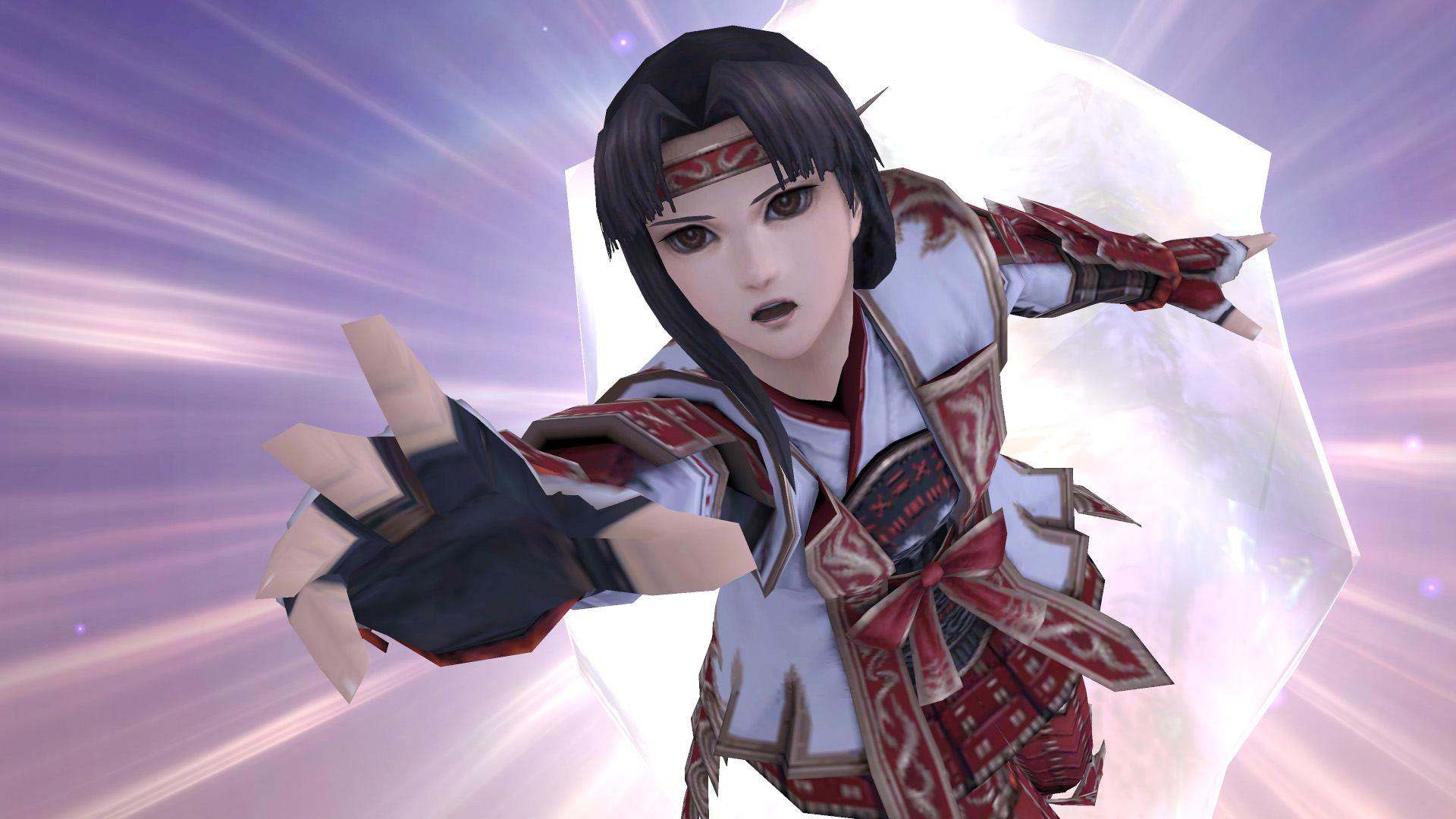
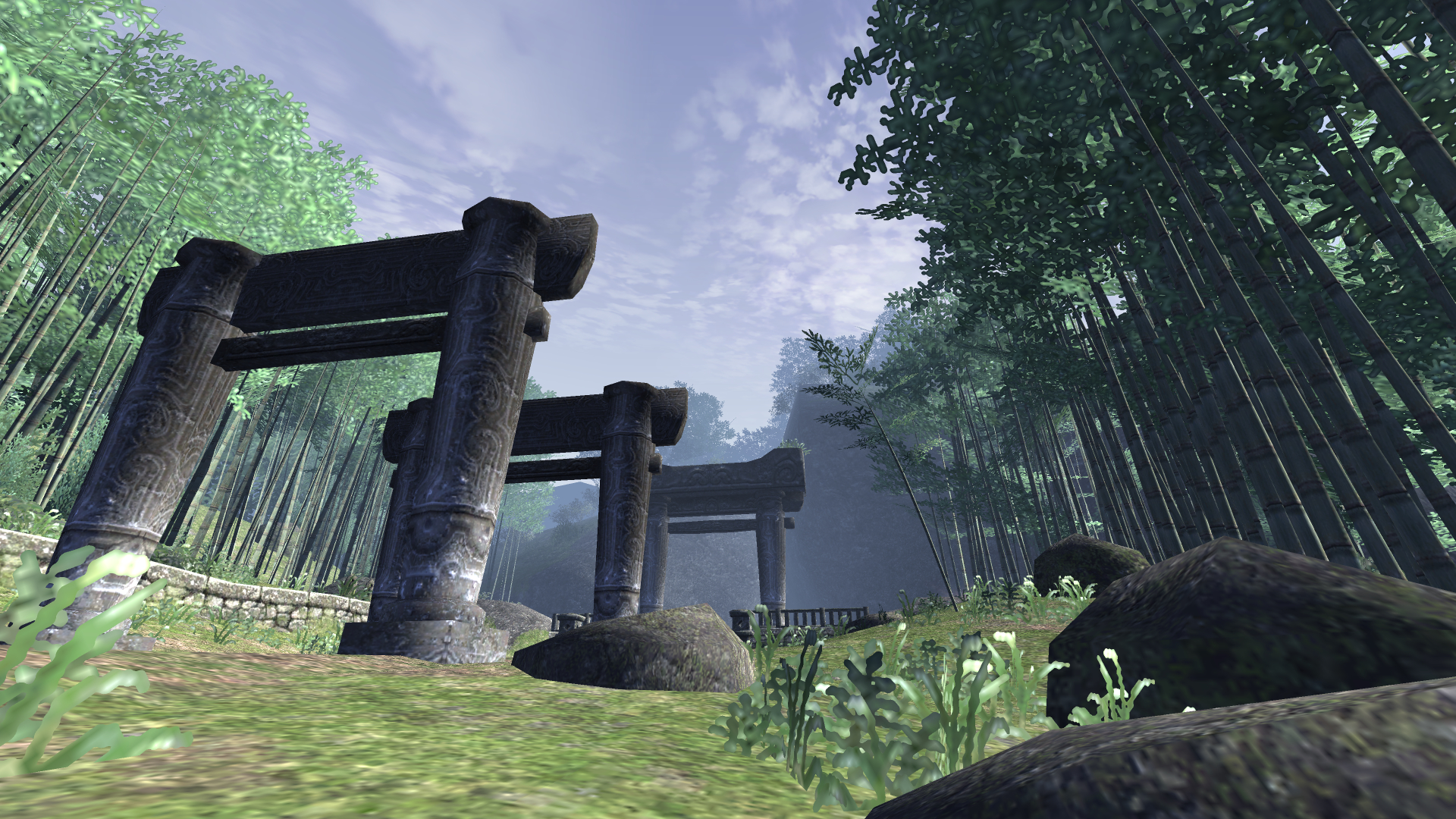
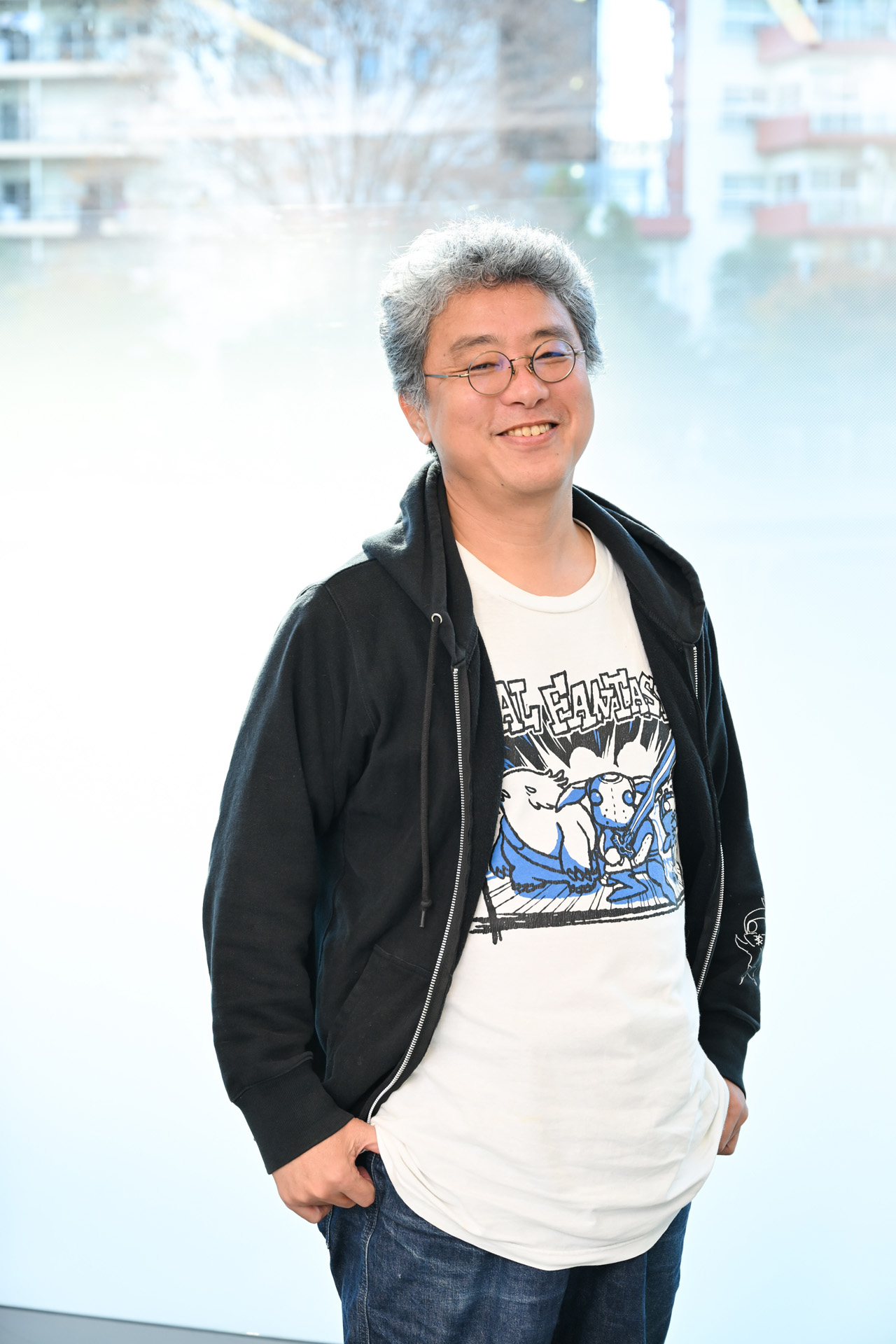
He has been involved in FFXI's development since its launch, focusing mainly on the battle system, where he was responsible for job class adjustments and other content in his role as a battle planner. In June 2012, he took over for the game's first producer, Hiromichi Tanaka, and supported FFXI's development for approximately 11 years as its second producer. He is currently serving as a planner on FFXI while shifting his development work to another title within the company.
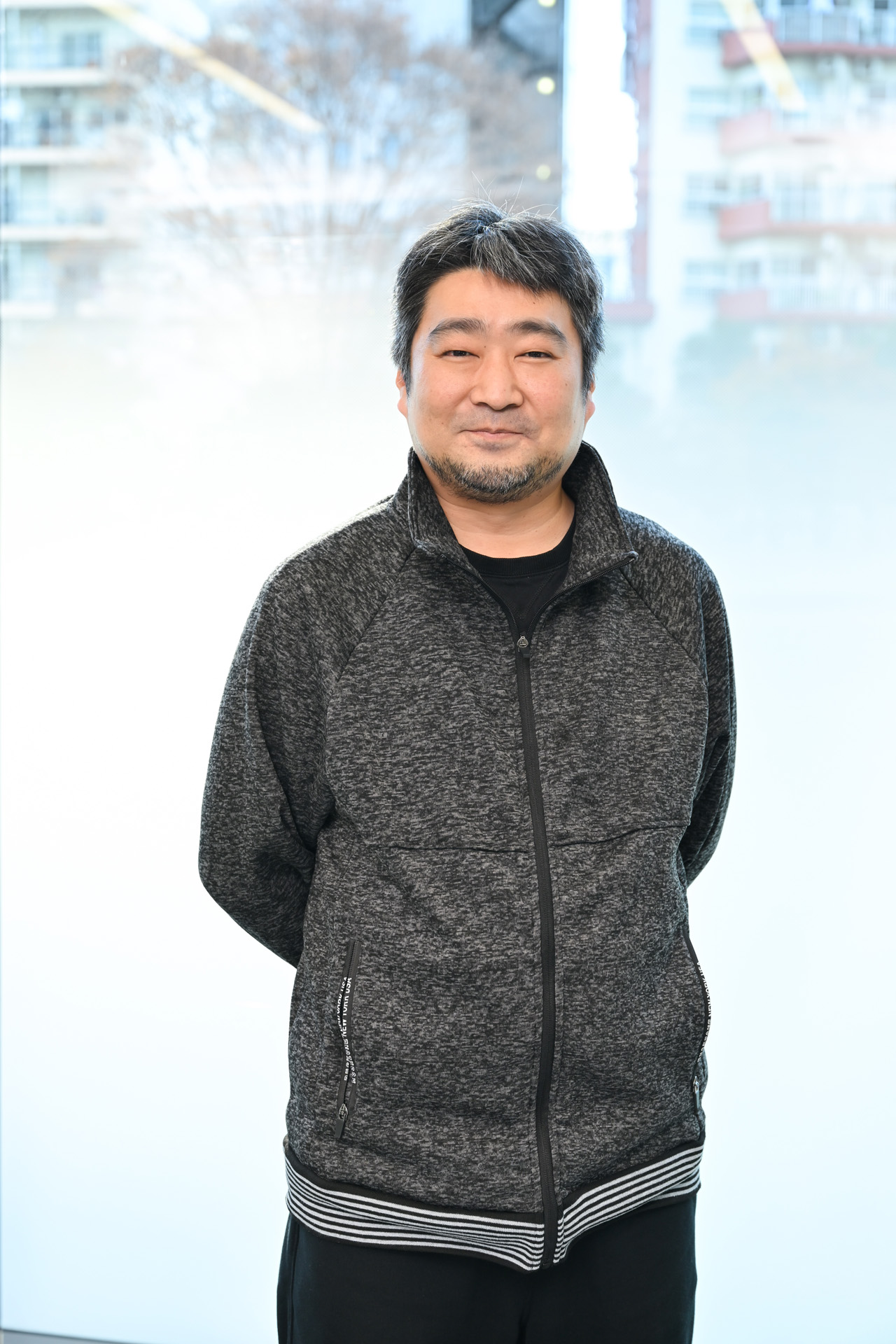
He worked on Treasures of Aht Urhgan and Wings of the Goddess as a battle planner, where he was responsible for battle content such as Besieged and Campaign Battles. In 2010, he took over for Akihiko Matsui and was appointed as the fifth director of FFXI, where he handled director duties up until Rhapsodies of Vana'diel.
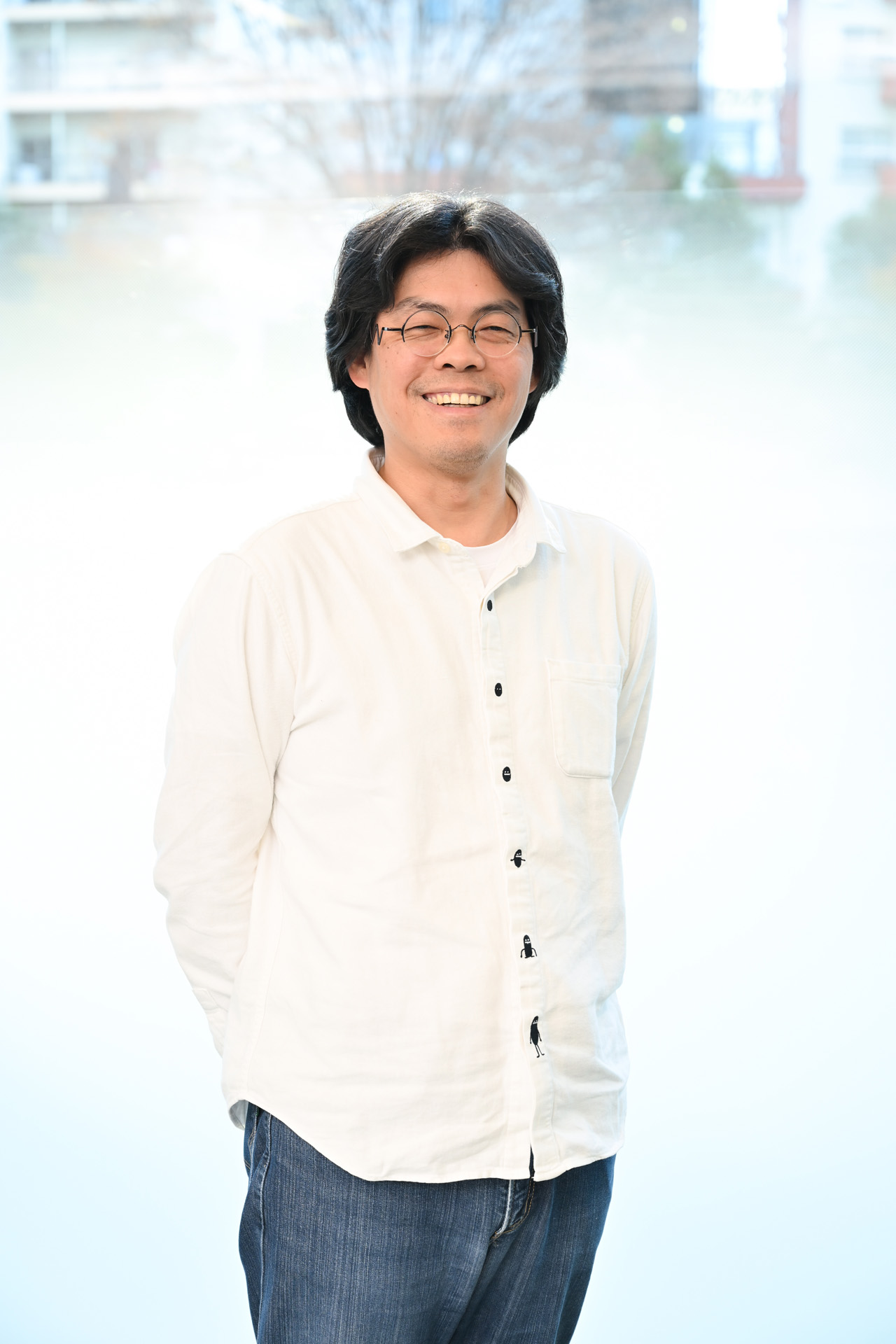
He previously worked on the FINAL FANTASY series debug team, and was later appointed to the FFXI development team, where he worked on the development of battle content for the game. He worked on the battle system for the additional scenario "A Shantotto Ascension" as well as the new geomancer and rune fencer job classes that were added for Seekers of Adoulin. After Rhapsodies of Vana'diel, he also oversaw the development of various battle content for the game.

His experience playing FFXI made an influence on him in regards to MMORPGs and the video game industry, and he was later appointed to the FFXI development team. He primarily focused on the Trust magic system, which was one of the main reasons that the world of Vana'diel has been able to exist for as long as it has.
A sense of crisis behind Rhapsodies of Vana'diel's development
Firstly, can you tell us how the plan for Rhapsodies of Vana'diel came about?
- Ito
Originally, we began planning Rhapsodies of Vana'diel when the number of players was starting to trend downward. We thought about FFXI's future, and we felt that without the addition of new support mechanisms such as Trust magic and the Rhapsody key items, FFXI wouldn't be able to last much longer. Obviously, we hoped to avoid such a grim fate for the game, so we worked backwards and started thinking up ways to keep the game alive, and that's how we came up with Rhapsodies of Vana'diel.
Seekers of Adoulin was released in March 2013, and features such as alter egos and teleportation between home points were added by the end of that year. Does that mean that you were already working on Rhapsodies of Vana'diel at that time?
- Ito
Yes, that's correct. From there, we kept pushing forward with our plan until Rhapsodies of Vana'diel's release.
Time-wise, FFXIV—which is also a MMO (massively multiplayer online) game like FFXI—was released at the end of August 2013, so did that also have an effect on FFXI's player base?
- Ito
I think it had a rather decent effect, yes.
That being the case, it's quite impressive that you were able to make progress on Rhapsodies of Vana'diel between then and the end of the year.
- Ito
We worked on the planning phase for Rhapsodies of Vana'diel alongside the version updates for Seekers of Adoulin.
- Fujito
There was also the problem at the time about how much longer we could continue with the PlayStation 2 version.
I can imagine, as the PlayStation 4 was already launching overseas by the end of 2013.
- Matsui
That was also a time when many negative rumors were floating about that FFXI could be shutting down at any moment. It was around that time, however, that we started work on a smartphone game based on FFXI, and there was a proposal from Mr. Yoshida* to announce it alongside Rhapsodies of Vana'diel* as well. So we basically decided that if it was to be the conclusion of FFXI, we should give it a proper ending. We talked about how it could be the first MMORPG in history to have an actual ending. Yes, I'm pretty sure that was a proposal from the team.
* Naoki Yoshida, FFXIV producer and director, FFXVI producer. * This announcement was made at the Vana'diel Project event held on March 19, 2015, although the smartphone game based on FFXI never did end up getting released. - Ito
Yes, that did come from us. It was our feeling that it wouldn't be fair to the players that stayed with us all those years if we were to just let the game's player base gradually shrink until it got shut down. That's why we proposed to go out with a bang—creating a large-scale version update that included a proper ending, and we eventually got it approved.
- Matsui
On top of that, we needed to hire more staff if we were going to realize something of that scale, so we put out a call and that's how Mr. Yamazaki joined the team. The HR department had set a deadline for the process, so it really came down to the wire. (laughs)
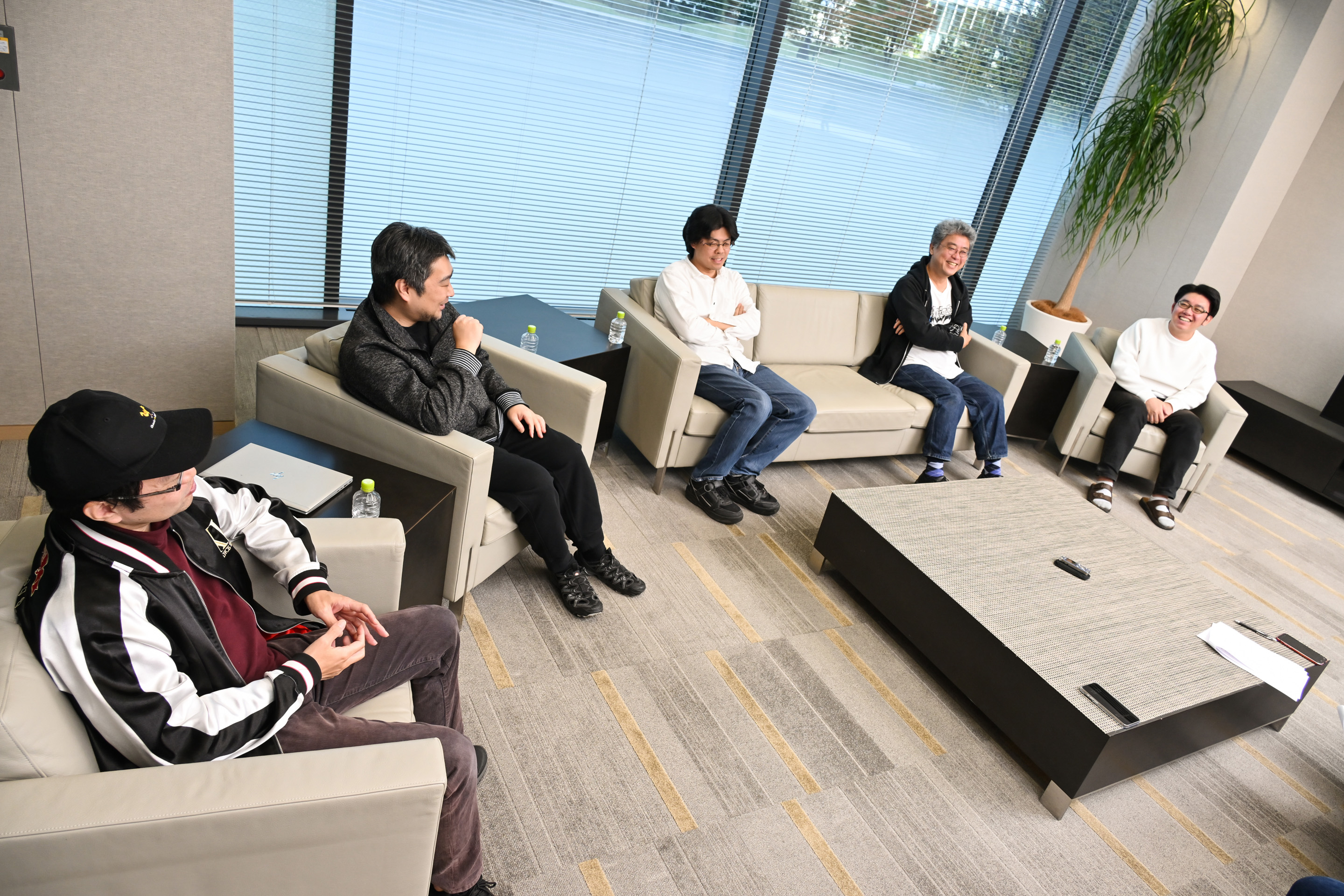
A "Trust magic" system that could only be developed from a player's perspective
Mr. Yamazaki, since this is your first appearance in this series, can you please tell us about how you applied for the position?
- Yamazaki
I was originally working for a different company, but was a regular player of FFXI. One day, when I was checking the official website about a version update, I noticed that FFXI was recruiting new staff.
Yes, I remember there was a very passionate recruitment speech from Mr. Matsui on the website.
- Yamazaki
It just so happened that the project I had been working on at my previous company wrapped up, so the timing worked out perfectly. Furthermore, FFXI was the reason that I wanted to work in the game industry, so I thought to myself that I'd like to work on FFXI, even if a small capacity, so I submitted an application. Afterwards, I was interviewed by Mr. Matsui and Mr. Ito, and I was able to join the development team.
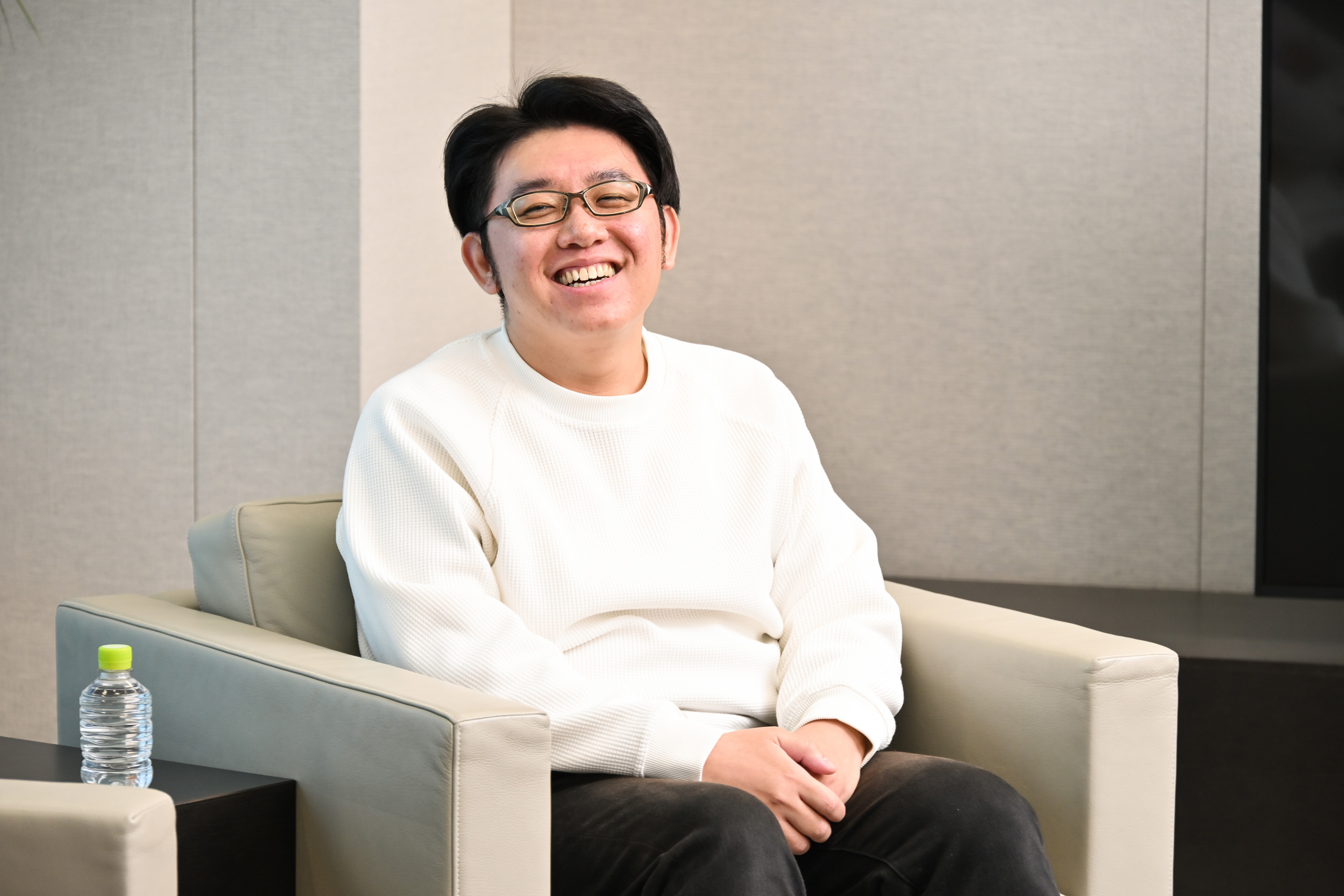
- Matsui
We were very lucky to be able to hire Mr. Yamazaki. Truth be told, up until that point, I didn't think that I had a particularly good eye for spotting talent. (laughs wryly) So I was lukewarm at best about sitting in on the interviews, but when we interviewed Mr. Yamazaki, I basically decided, "Let's hire him!" right there on the spot. He ended up doing an excellent job too, so I'd really like to take a moment to admire my decisiveness regarding the matter. (laughs)
- Ito
At the time, I couldn't have imagined that we'd be interviewing someone who basically joined the game industry because of FFXI. Although if you think about it, FFXI had been going for more than ten years by that point, so basically a full cycle of the Chinese zodiac. So I felt that since we came across such a person, we should hire them right away.
So you'd basically encountered a generation that had grown up playing FFXI.
- Ito
That's why we decided that we could give such a large and important feature as the Trust magic system to Mr. Yamazaki. I believe you started by listing up the NPCs, right?
- Yamazaki
Yes, that's right. I asked Mr. Matsui at the time what we should set the limit at, and I remember him saying he wanted to create about 108 characters.
- Matsui
Hey, wait a minute! That wasn't just a random number I came up with... Didn't we talk about Suikoden* too?
* Suikoden, known as Water Margin in English, is a Chinese novel that tells the tale of 108 heroes. - Yamazaki
Actually, you might be right about that. (laughs)
- Ito
I remember seeing the list of NPCs and wondering why Joachim was in there. I mean, he wasn't a particularly legendary character or anything...
- Yamazaki
I think that might've been due to the differences between people who had been working for a long time as developers on the project; and myself, who had been more of a player. As someone who played the game as much as I did, I had multiple encounters with him, so he definitely left an impression on me.
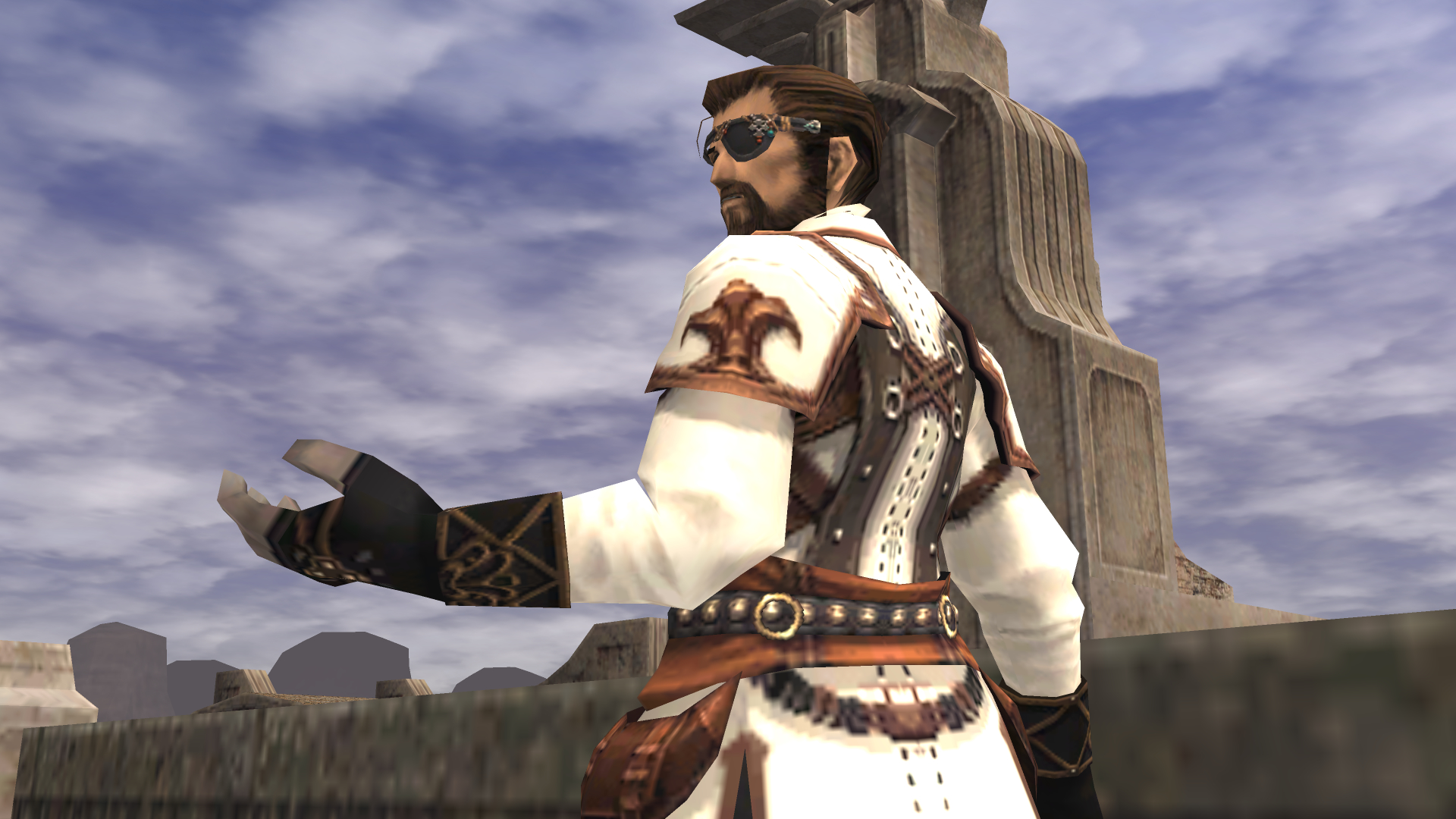
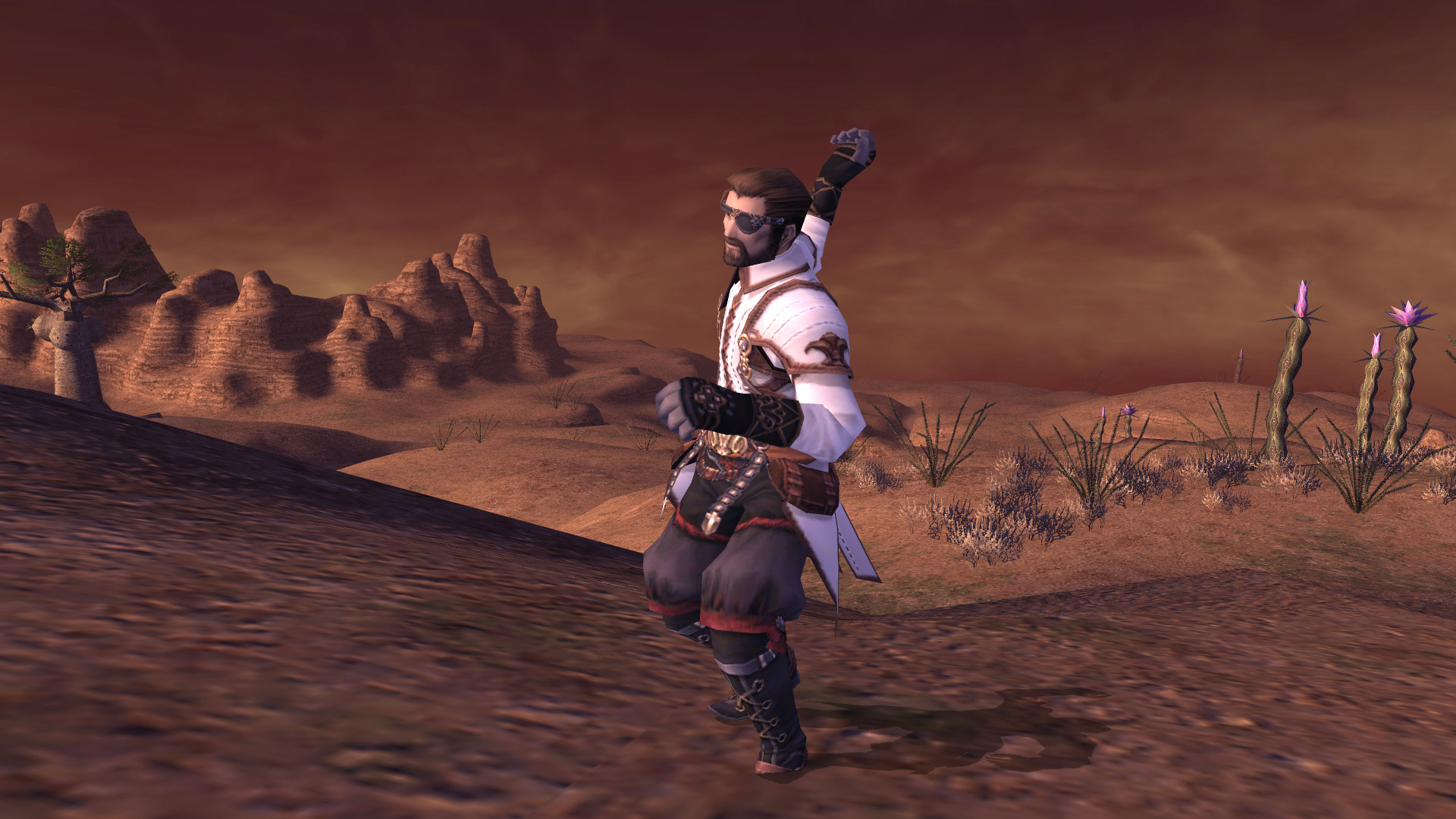
For Abyssea, you had to visit Joachim every day in order to receive a traverser stone. I thought it was interesting to see that Joachim's attack was to throw stones.
- Yamazaki
Yeah, he's got a lot of stones that he’s carrying around with him too. (laughs)
That being said, was it difficult trying to come up with unique "hooks" for the more than 100 NPCs that ended up being added to the system?
- Yamazaki
It was, but I had always enjoyed the FFXI story, and I'd played all of the expansion disc missions and quests too. As such, I think that was quite useful in gaining an understanding about each NPC's personality and character.
How did you end up deciding on their abilities?
- Yamazaki
While creating the alter egos, I received some advice from Mr. Matsui that if we considered how each of the NPCs could be used in battle, we could come up with unique ways to use them, even if we had more than 100 different characters. Therefore, I recalled what role the NPCs played in the story and then used elements from that when thinking about how they'd fight in battle. Although there were some NPCs who were hard to recreate in battle from a technical perspective, I don't think it was particularly difficult in terms of their character itself.
- Fujito
Ultimately, the alter ego candidate list ended up growing quite large, which made it pretty tough to pare that down to just 108 characters.
Out of that list, were any of the alter egos especially memorable for you, Mr. Yamazaki? Please share some of your favorites with us.
- Yamazaki
That's a tough question... I'd have to say that Shantotto II is right up there, due to how many team members were involved.
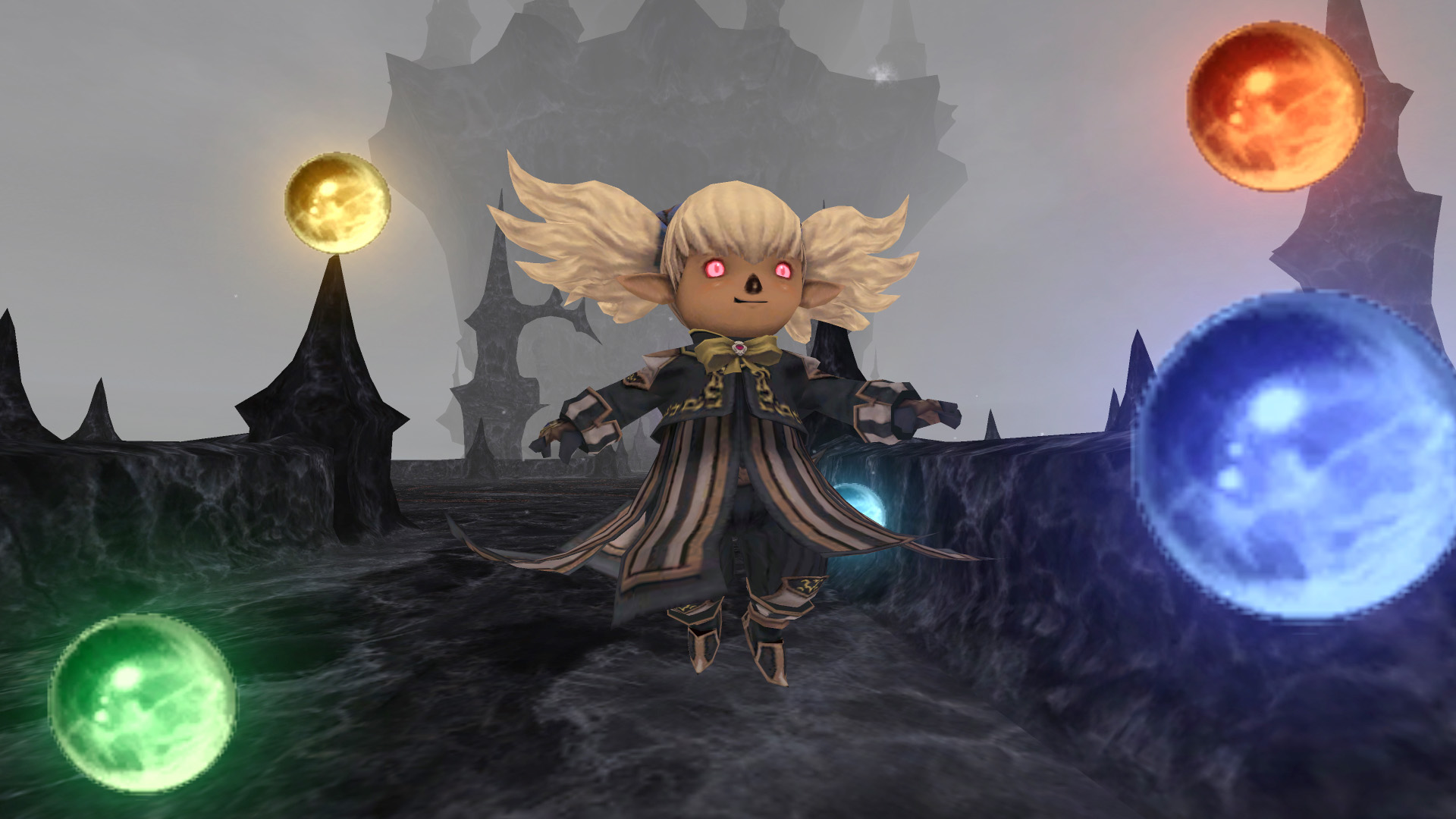
Yes, some characters are limited to alter egos.
- Yamazaki
In terms of development, I looked over the artwork for the characters and then discussed with Mr. Ito what kind of attacks such a character might use.
- Matsui
You can probably tell from what he just said, but over the course of FFXI's development, we often took new team members and just assigned them to work on a large new game feature right off the bat. In doing so, it forces them to talk with a lot of other people in order to know how to proceed. And over time, that helps teach them about our team's culture and the work itself, little by little.
So rather than a system of simple approvals and rejections, you end up fostering communication between the team members.
- Matsui
Also, if the task we assign them is standalone content within the game, we're able to make any necessary adjustments if things fall behind schedule. Conversely, if we have them come in to support work on content that is already on-going as a type of learning experience, the effect on existing content can be quite large if any trouble occurs. In a sense, we were throwing him into a sink-or-swim situation, but we felt that we could entrust Mr. Yamazaki with the important task of creating the Trust magic system.
- Ito
Furthermore, there were a lot of challenges present too, as there were many NPCs that had to be included no matter what. For example, we knew we'd be including Iroha and Iroha II, and that we'd want 12 or more alter egos that could highlight a login campaign, for example. In that sense, there were various things that needed to be considered regarding how they were implemented, so I think it was probably a pretty difficult job.
- Yamazaki
Definitely. It was especially worrisome deciding on when to implement the famous NPCs. Although the schedule was decided in advance, there were numerous instances where we felt that if we added a character at a certain point, the impact might be lessened one way or another depending on which character came next. I remember talking with Mr. Ito multiple times about possibly switching the order of certain characters.
- Ito
I think there was a lot of pressure regarding the whole thing because we were making the Trust magic system a highlight of the login campaigns that we felt would be needed to help support FFXI going forward. Although, I think it turned out quite well in the end, as it greatly reduced player attrition.
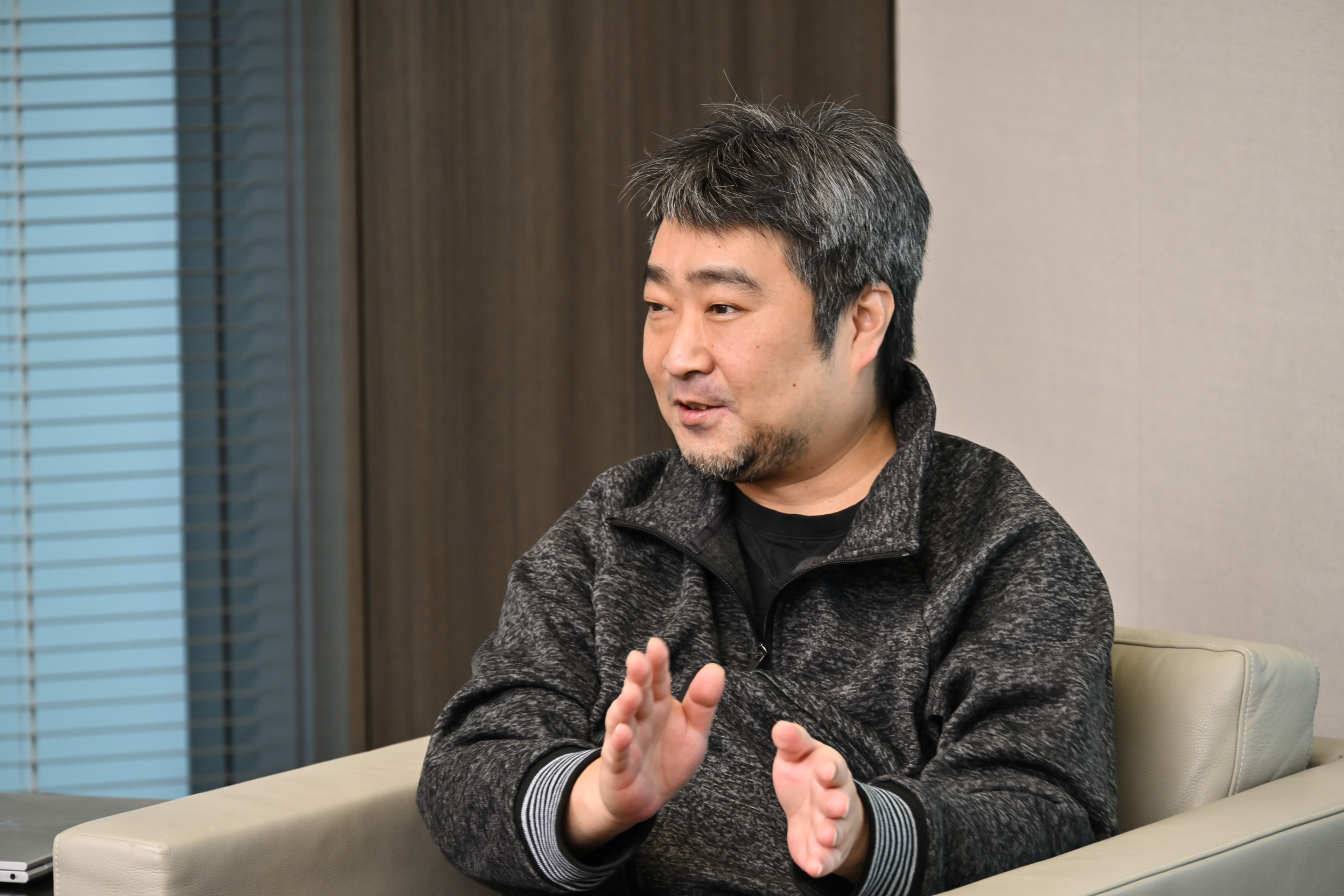
Going from despair to hope with Rhapsodies of Vana'diel's story
Next, I'd like to talk about Rhapsodies of Vana'diel itself. Firstly, in regards to the story, I know that both Ms. Sato* and Mr. Saito* were a big part of its creation, but what kind of discussions did all of you have within the team at the time?
* Yaeko Sato, FFXI scenario and event planner.* Yoshitsugu Saito, former FFXI scenario and event planner.- Ito
In the beginning, Mr. Matsui, Ms. Sato, Mr. Saito, and myself got together and asked Mr. Matsui to come up with a list of topics for the scenario.
- Matsui
I asked them to start off the story from a point of despair. Basically, we knew that this would be the last large-scale version update for FFXI, and that we'd also be ending support for the PS2 and Xbox 360 versions, so I wanted to kind of synchronize the mood of the characters in the game with how the game's players were probably feeling at the time. From there, the only request I had was that they instill a sense of hope in everyone by the end, and left the remaining details to the team.
- Ito
I was shocked by how dynamically Ms. Sato's scenario unfolded.
- Fujito
Yeah, there was the whole thing about the adventurer essentially turning into... Well, you know the rest.
- Ito
I thought to myself, "Wow! Is this for real!?" Although, I felt that based on the story up to that point—where the player had faced countless beings who were more than human—that such a concept was a necessary step if this was to be the final chapter to the story and also surpass that which had come before it. So it felt pretty natural to run with that idea.
The cutscenes in Rhapsodies of Vana'diel were quite amazing, with elements such as the camera angles and cuts enjoying a level of quality that exceeded pretty much all that came before them. How were the cutscenes made?
- Ito
Mr. Saito oversaw all of the events, and everyone watched test videos of the scenes during the debugging process, after which various corrections and adjustments were made and the scenes were updated accordingly. I think the events team also realized that it was probably the last time that they'd get to work on large-scale event scenes for FFXI. Therefore, everyone was likely motivated to put their very best foot forward so that they could go out on a high note.
- Matsui
At the time, the animation team leader was right by Mr. Saito's side every step of the way, and they put in a lot of long nights on the project. Also, it was pretty impressive that the event scenes managed to tie the Trust magic system into the story at the very end too.
- Fujito
That reminds me, but I told Mr. Saito that it'd be nice to have a scene where everyone is working together to face the enemy.
- Ito
So we took that idea and implemented it through the use of the Trust magic system.
The appearance of the goddess Altana was also a memorable moment.
- Ito
We weren't originally planning to add Altana to the game, so we didn't have it in the budget to create a 3D model for her. However, as the story came together, we realized it just wouldn't be possible to portray her as a mere "ball of light," and I felt the same way, so I spoke with the designers and we were able to get it done.
Altana really had a god-like presence, and it was impressive how faithful she was drawn in the style of Mr. Amano* too.
* Yoshitaka Amano, an illustrator who has worked on numerous fantasy titles, including the FINAL FANTASY series.- Ito
Yes, I agree. We looked to various references, such as the image of her depicted on the world map shown in the game. We also had to make various changes and adjustments, as we couldn't have her appear to be naked. The thought was to have her basically wearing full-body tights, and maybe show a little skin here or there, but we'd be told that such a design wouldn't work well in Europe, or other things like that. So after various rounds of revisions, she turned out the way you see her in the game.
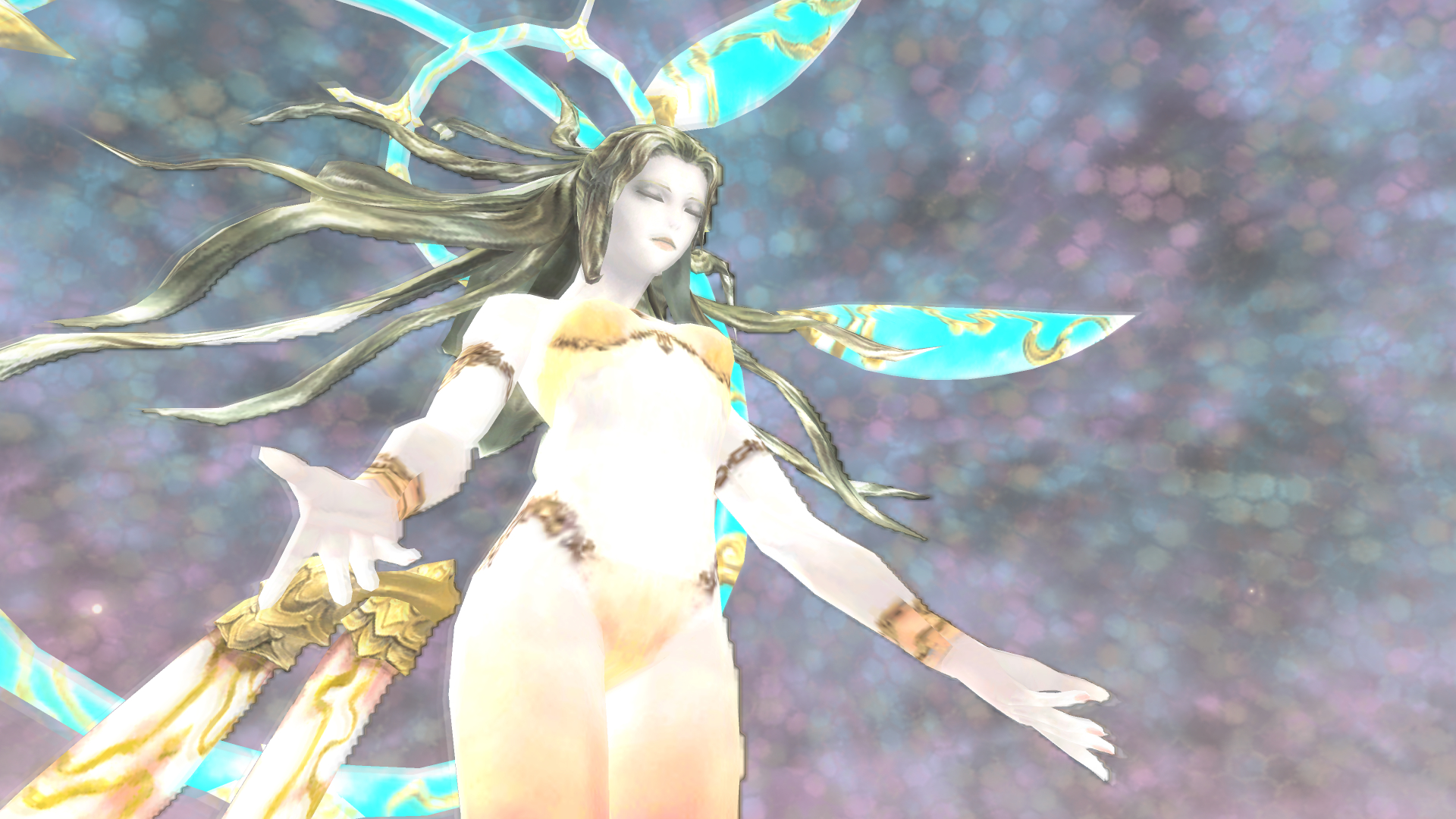
The final battlefield also had a lot of care put into it as well. Can you talk a bit about the concept behind it?
- Ito
That was an idea born out of a brainstorming session between Mr. Tsuchiya* and me. We thought about how we wanted to show all of the player's memories up to that point, which led to us thinking of that location. It's a pretty intense battle, so I don't imagine too many people saw all of the scenes that were playing out in the background, but it was our hope that players would at least recognize them as a kind of kaleidoscope of their memories from the game.
* Kiyoshi Tsuchiya, former background texture director for FFXI.
"The Far East" was considered as a setting for an expansion disc
A portion of the "Far East" setting was included in Rhapsodies of Vana'diel in the form of Reisenjima. Can you talk about how Reisenjima came to be?
- Ito
Actually, before Rhapsodies of Vana'diel, we were planning on setting a full-fledged expansion disc in the Far East.
Ms. Sato and Mr. Saito have mentioned plans for a setting in the Far East in the past, but you're saying it was actually considered as a proper expansion. What were you planning to do for the content?
- Ito
I think in the beginning, we were thinking of a place with "Shinto-style torii gates," kind of like Reisenjima. We based the image on a Kyoto-like townscape, but even more vibrant, and there'd be a large street lit up with paper lanterns at night. There, players would encounter a "man who was a bit of a scoundrel, but still had many lovable qualities about him," and the adventure would proceed from there. In actuality, that man was going to be important, like a general, and the story was going to unfold around him. That was the general idea we had for the story.
I'm dying to know what happens next. (laughs)
- Ito
However, the expansion disc ended up no longer being an option, so we pivoted to making one final episode that would bring a conclusion to the game, which ended up becoming Rhapsodies of Vana'diel. Although, we even scouted locations such as the Kanda Shrine in Tokyo for inspiration.
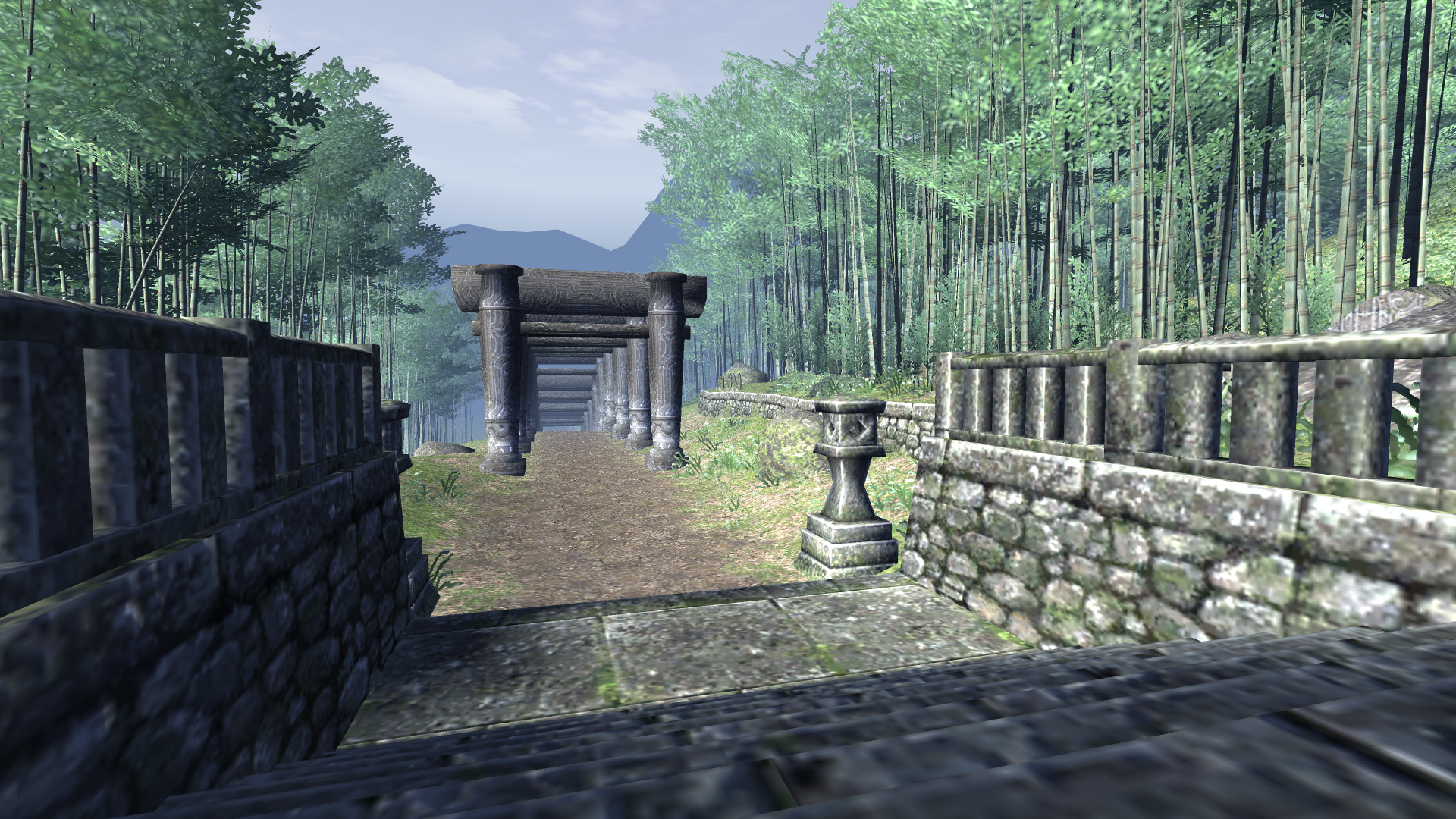
Next, can you tell us how the character of Iroha, Rhapsodies of Vana'diel's heroine, came about?
- Ito
Iroha was created by Mr. Saito working alongside the events team, and she was designed as a character who came from the future and had links to Tenzen. At first, she wasn't Tenzen's daughter, and her name was actually Tomoe.
- Yamazaki
I remember receiving a message that we needed to change her name because it was the same as the heroine in Rurouni Kenshin*.
* A Japanese manga series created by Nobuhiro Watsuki set in the early days of the Meiji era. - Ito
The name "Tomoe" was already a famous character easily found by an internet search, so I proposed the name Iroha instead. Just in case, I also did a search for Iroha to be safe, but figured it'd be okay. (laughs)
How did you come up with her visual design?
- Ito
I came up with the overall design, which was to be a warrior who wields a spear and harbors the power of the phoenix. I then worked with the designers to come up with her current appearance. At the same time, the design for the "Awakened Iroha (Iroha II)" was also created. I told everyone how she would end up and that she'd be cutting her hair in order to give it to the player, so that needed to be reflected as well.
So those elements were decided from the very beginning.
- Ito
On top of that, we had her say her famous line to the player: "We are all humbled by your service these past fourteen years." I told Ms. Sato that line was an absolute must. That line conveys not only Iroha's own thoughts, but is a message from her to the players and also the developers who had been involved with the game all those years.
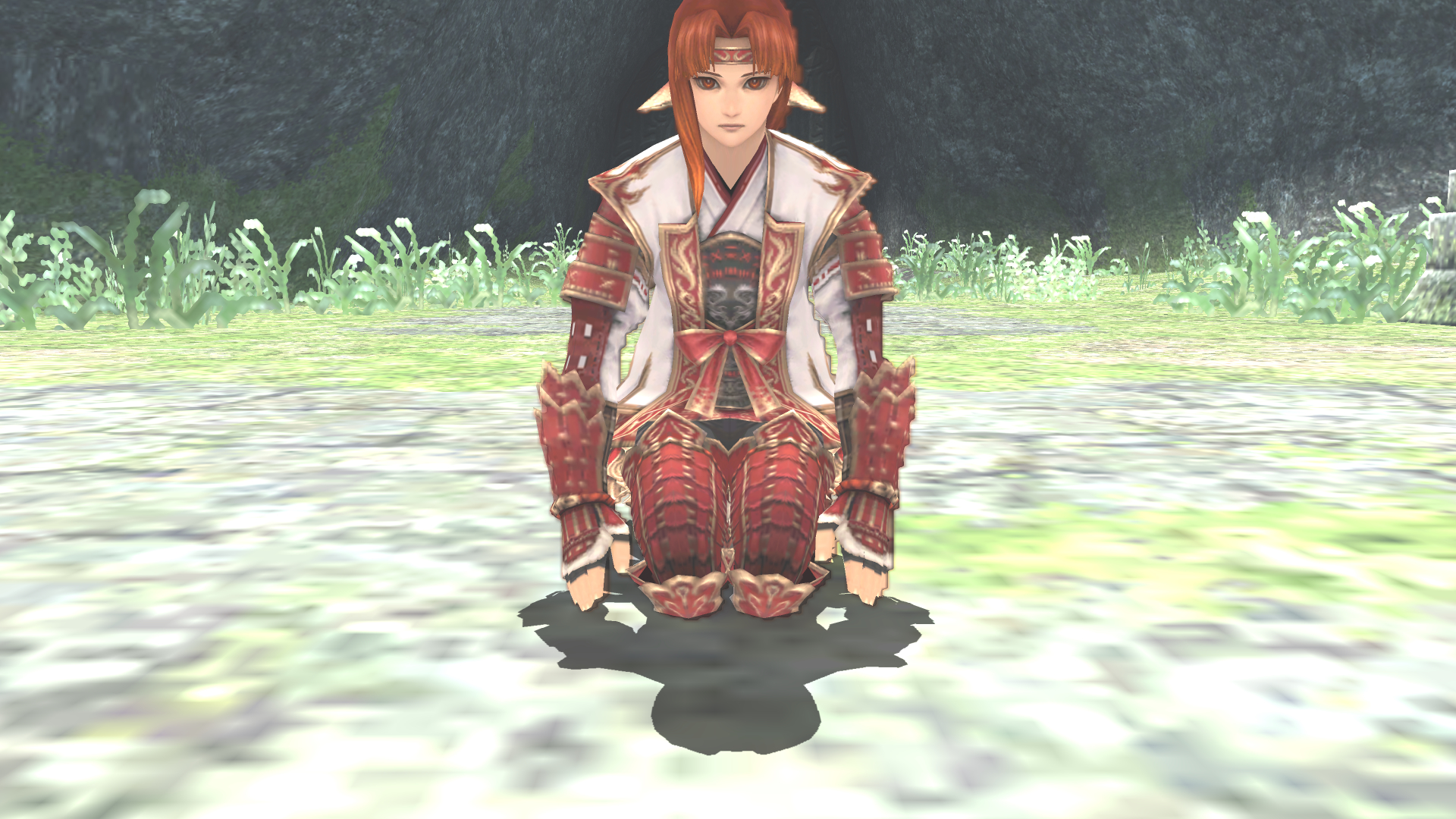
Mr. Saito mentioned how the scene moved him to tears, even though he was the one working on them and knew what was coming in advance.
- Ito
I also cried when I was testing the scene during the debugging phase, despite the fact that the graphics weren't entirely finished yet. I remember Ms. Katayama* coming up to me with tears in her eyes and saying, "That isn't fair..." (of me to do such a thing). I think that anybody who can relate to that particular line is likely going to end up crying.
* Rieko Katayama, Lead Publicity Planner for FFXI.
Going from the brink of extinction to survival with a new team
The announcement was made at the Vana'diel Project event that Rhapsodies of Vana'diel would be the last major version update for FFXI. However, new content was continually added to the game, including Ambuscade, Omen, Dynamis – Divergence, and more. Can you please tell us a bit about the situation behind that?
- Matsui
The original plan was to simply focus on game balance adjustments and bug fixes once the PS2 and Xbox 360 versions ended. However, we felt that if we could put together a small team of individuals who were capable of handling everything in regards to FFXI, we could continue generating content for the game. So I asked Mr. Yoshida for six planners. That was six people, including both myself and Mr. Fujito, so we were hoping to get an additional four team members. There were lots of other team members besides those four who said they wanted to remain on FFXI, but we needed the six team members to be able to handle everything in regards to the project rather than just one specialized area, so I unfortunately had to turn a lot of people down when forming the team.
And Mr. Taniguchi and Mr. Yamazaki were two of those team members that were chosen.
- Matsui
Yes, that's right. I knew that Mr. Taniguchi could handle both the battles and job classes.
- Taniguchi
I worked on the battles, jobs, and also the items... I pretty much handled them all by myself. I also was in charge of Dynamis – Divergence.
- Matsui
We didn't include Dynamis – Divergence in the initial planning stages.
- Taniguchi
The development team was talking about how it'd like to add new content to the game, and I said that I'd like to do something using Dynamis. That led to the creation of a new Dynamis. I started work on the feature, and I figured that if we're making a new Dynamis, we should leave the original one intact and create something different, which is how it ended up what it became.
One of the key features of Dynamis – Divergence is upgrading relic armor, but was that also part of the original plan?
- Taniguchi
We thought that if we're making a new Dynamis, we should offer the ability to upgrade relic armor too, so we considered allowing two levels of upgrades since Omen let you upgrade artifact armor by two levels. In the original Dynamis, the zones were different for each body part, so we did the same thing for Dynamis – Divergence. On the system side, we employed the use of waves of enemies, and once you entered a zone in Dynamis – Divergence, an upgrade flag for HQ+2 was triggered, and if you cleared the first wave, that triggered the flag for HQ+3.
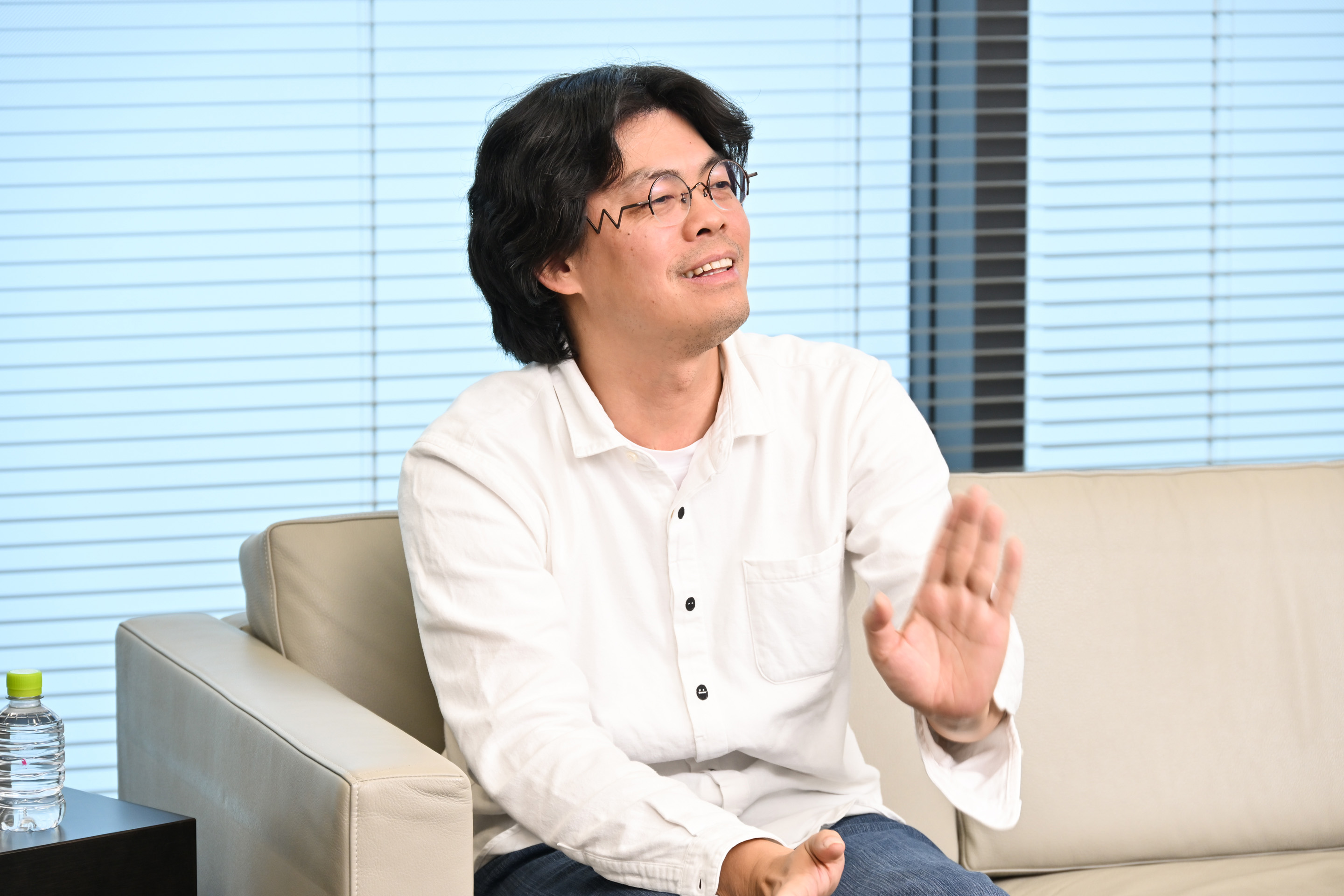
A period of nine years has proved that the team could "keep up the fight"
Lastly, it's been approximately nine years since Rhapsodies of Vana'diel was released, but as the director and producer at the time, Mr. Ito and Mr. Matsui, I'd like to ask you both what your feelings were back then.
- Ito
I felt that we had taken various steps to help combat what appeared to be the imminent end of FFXI. I think especially in the case of the Trust magic system, it was like killing six birds with one stone, so to speak. I thought that with just that feature alone, FFXI could keep on going, at least for a little while longer. Furthermore, it was designed as something that could be expanded upon during the monthly version updates, so the Trust magic system really was like an ace up our sleeve in terms of keeping the game alive. We estimated that we'd eventually hit a wall in terms of how many NPCs we could add, and that it'd last about two years is all. Therefore, the fact that FFXI has continued well past that means that it has exceeded even my expectations at the time. I feel it is quite the impressive feat.
- Matsui
As the end of the PS2 and Xbox 360 versions approached, we not only made various improvements, but also added features like teleporting between home points, the Records of Eminence, and other elements that we felt would keep players engaged. So we kept that in mind while we continued working on the game. The feeling amongst the team was that because FFXI had built up so many resources over the years, there was a feeling that it'd be a waste to let it die off now, and that we could "keep up the fight." I think that more than anything, these nine years are proof that we made the right choice.
